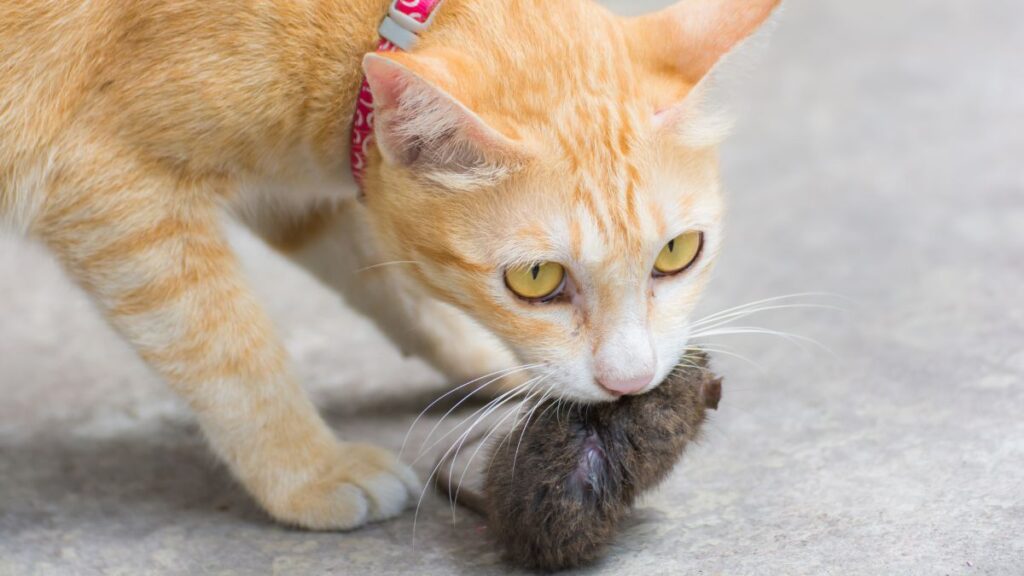In the realm of potential dangers for our feline companions, voles may not be the first concern that comes to mind.
However, understanding the risks associated with cat-vole interactions is crucial for responsible pet ownership.

Voles, small rodents resembling mice, are common in various environments.
While they may seem harmless, the potential dangers they pose to our cats should not be underestimated.
Let’s explore the intricate relationship between voles and cats and uncover the risks associated with their interactions.
Identification of Voles
Before delving into the potential dangers, it’s essential to correctly identify voles. Understanding their physical characteristics and behaviors aids in recognizing and addressing the risks they may pose to your cat.
Voles and Cat Interactions
Cats, known for their curious and playful nature, may encounter voles in various settings. Whether in the backyard or indoors, exploring the dynamics of cat-vole interactions is crucial to assessing potential risks.
Diseases Carried by Voles
Voles can carry diseases that may be harmful to both humans and animals. Exploring these diseases and their potential transmission to cats is essential for informed decision-making regarding your cat’s safety.
Cat Sensitivity to Vole-Related Diseases
Just as with any potential health threat, understanding a cat’s sensitivity to diseases carried by voles is essential. Factors such as age, health condition, and overall immunity play a role in determining the extent of the risk.
Recognizing Signs of Vole Exposure in Cats
Identifying signs of vole exposure in cats is critical for early intervention. Changes in behavior and physical symptoms should be closely monitored to ensure prompt action and proper care.
Immediate Actions for Cat Owners
In the event of a cat-vole interaction, knowing the immediate actions to take is crucial. From cleaning wounds to seeking veterinary care, swift and appropriate measures can make a significant difference in your cat’s well-being.
Preventive Measures
Preventing cat-vole interactions is the first line of defense. Explore effective ways to reduce the risk of encounters, and consider cat-friendly pest control options to maintain a safe environment for your feline friend.
Common Misconceptions
Dispelling myths about voles and cats is vital for accurate risk assessment. Addressing common misconceptions helps cat owners make informed decisions and fosters a better understanding of the actual dangers.
Other Potential Dangers for Cats
While voles present a specific risk, it’s essential to acknowledge other potential hazards in your cat’s environment. Taking a comprehensive approach to pet safety ensures a well-rounded strategy for protecting your furry friend.
Stories from Cat Owners
Real-life experiences from cat owners provide valuable insights into the dynamics of cat-vole encounters. These stories emphasize the importance of awareness and proactive measures to ensure a safe living environment for your cat.
Experts’ Insights
Seeking advice from professionals adds credibility to our understanding of the topic. Veterinarians and pest control professionals offer expert opinions on creating an environment that minimizes the risks associated with cat-vole interactions.
Understanding Vole Behavior
To effectively mitigate risks, it’s essential to understand vole behavior. Insights into their habits and behaviors enable cat owners to implement strategies that minimize the likelihood of encounters.
Conclusion
In conclusion, while voles themselves may not be inherently dangerous to cats, the diseases they can carry pose a potential threat. Responsible cat ownership involves understanding and addressing the various aspects of your pet’s environment to ensure their safety.
FAQs
- Can my cat catch diseases from voles without direct contact?
- Indirect transmission is possible, emphasizing the need for preventive measures.
- How can I prevent voles from entering my home?
- Seal entry points and consider cat-friendly pest deterrents.
- Are there specific symptoms my cat may exhibit after a vole encounter?
- Symptoms vary, but changes in behavior and physical health should be monitored.
- Should I be concerned if my cat plays with voles?
- Monitoring is advised, and preventive measures should be taken.
- Can voles cause harm to humans?
- While the focus is on cats, voles can carry diseases that may also affect humans. Precautions are advisable.
